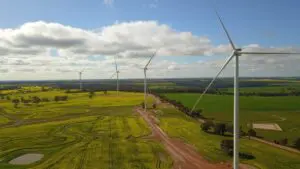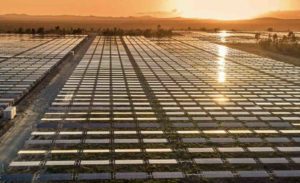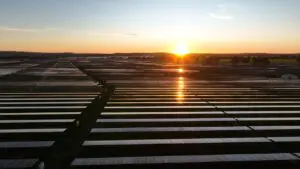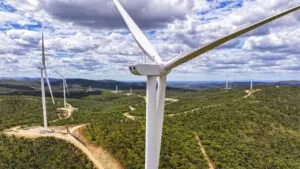The still surging rooftop solar market continues to have an impact on the electricity grid and energy assets in ways that most of the households and businesses that own the PV modules could not have imagined.
The Australia Energy Market Operator reports that operational demand on Australia’s main grid (the National Electricity Market) hit a new winter low of just 12,144 megawatts (MW) at 1pm on Saturday, as rooftop solar accounted for 46.5 per cent of the grid’s supply on a warm and sunny afternoon.
Overall demand remained reasonably high at around 23,000 MW, but because much of that demand was being met by consumers generating their own electricity, operational demand – which is demand of the power system that
needs to be met by grid-scale generators such as wind, solar, gas and coal – was at a record low for the season.
According to AEMO, average prices across the main grid – which is made up of five linked state grid in Queensland, NSW, Victoria, South Australia and Tasmania – averaged between minus $30 a megawatt hour and minus $68/MWh between 8am and 4pm on that day.
AEMO says the new winter minimum operational demand record beat the previous low of 13,339 MW set on 27 August 2023, and coincided with new winter lows in NSW (4,518 MW at 1:00pm), South Australia (189 MW at 1:30pm) and Victoria (2,471 MW at 1:30pm).
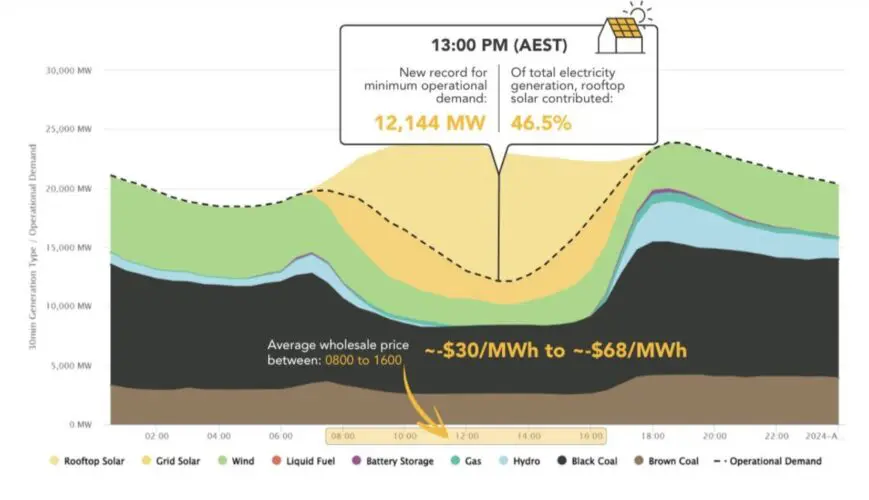
At the time, generation across the NEM consisted of rooftop solar 46.5 per cent; grid scale solar 8.3 per cent; wind 8.9 per cent and non-renewables 36.3 per cent.
The share of renewables might have been significantly higher, but energy analysts also report that there was record curtailment of large scale wind and solar, presumably mostly due to economic reasons. i.e. they didn’t want to pay others to take their output.
In NSW, according to Geoff Eldridge of GPE NEMLog, curtailment of large scale wind and solar amounted to a record level of 27.4 per cent of demand, and at 2,410 MW that level of curtailment actually matched the amount of coal generation at the time.
Coal generator also owners don’t like paying others to take their output when prices fall below zero, but are prepared to do so because it is cheaper and preferable to switching their machines off.
The growing impact of rooftop solar, and large scale renewables, is one reason why market operators, regulators and asset owners say that so called “baseload”, or “always on” power generators have no future in a high renewables grid.
The back up and gap filling will come from flexible and dispatchable capacity, such as battery and other storage or – at least for a time – from fast-start gas generators.
Coal generators are already required to flex considerably in response to rooftop solar and zero cost wind and solar output. In NSW, the coal output hit a low of around 2.4 GW in mid afternoon before ramping back up to more than 7 GW in the early evening.
According to Global Roam, some two thirds of the available large scale solar resource was curtailed in the middle of the day on Saturday, leading analysts to question the impact in spring, when the solar resource is stronger and when the demand remains low due to mild conditions.
ITK principal David Leitch, who is also the co-host of the Energy Insiders podcast, says negative prices can provide an incentive to consume the spilled surplus by either shifting demand, creating new demand, or adding more storage.
“There will be lots more storage, another 5 GW at utility level within 2 years,” Leitch wrote on LinkedIn. “But there was already 4 GW of surplus on the weekend and we are installing rooftop and utility solar at over 3 GW a year.”
Meanwhile, on Monday, a new renewable share record was posted in Queensland, which hit a peak of 73.2 per cent at 10.50am, up slightly from the previous record set in November last year. The share of wind and solar hit a new peak of 72.8 per cent, up 0.8 per cent from the record set just four days earlier.
The new peaks follow a record share of rooftop solar a week ago, when it reached more than 50 per cent for the first time. Still, Queensland has a relatively modest overall share of renewables of just 29 per cent in the last 12 months – the lowest of any state in the country – and is aiming for an 80 per cent share by 2035.


